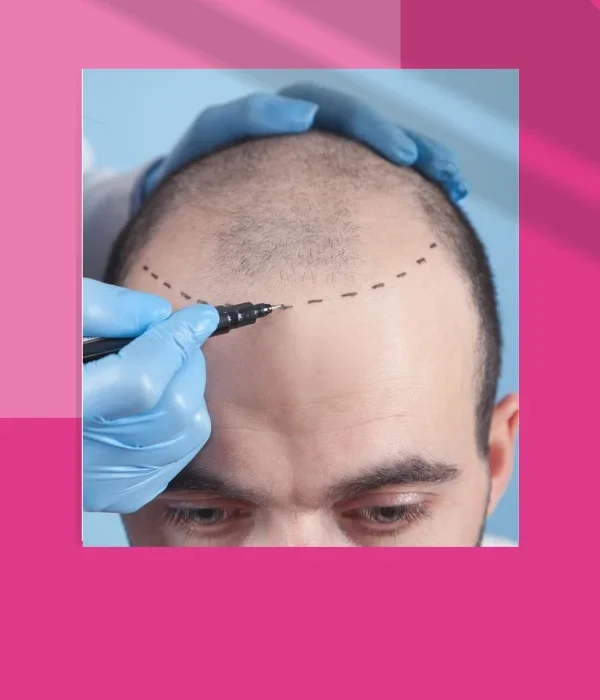Hair Transplant: Achieving Natural Hair Restoration
Hair loss is a common problem faced by both men and women, and it can have a significant impact on one’s self-esteem and confidence. Hair transplant is a surgical procedure that involves transplanting hair from the back or sides of the scalp to the bald or thinning areas.

Hair transplant is a surgical procedure that involves moving hair follicles from one part of the scalp (donor site) to another part (recipient site) that is bald or has thinning hair. The procedure is usually performed under local anesthesia, and it can take several hours depending on the size of the area being transplanted.
There are two main types of hair transplant: Follicular Unit Transplantation (FUT) and Follicular Unit Extraction (FUE).
2.1 Follicular Unit Transplantation (FUT)
FUT involves removing a strip of skin from the donor site, usually the back or sides of the scalp, and then dissecting it into individual follicular units. The units are then transplanted into the recipient site. FUT leaves a linear scar at the donor site, which can be hidden by hair.
2.2 Follicular Unit Extraction (FUE)
FUE involves removing individual follicular units directly from the donor site using a punch tool. The units are then transplanted into the recipient site. FUE leaves small, round scars that are less noticeable than FUT scars.
Hair transplant works by relocating healthy hair follicles from the donor site to the recipient site. The transplanted hair follicles continue to grow hair in their new location. The transplanted hair is usually permanent, as it is resistant to the hormone responsible for hair loss, called DHT (dihydrotestosterone).
Preparing for Hair Transplant Surgery
Before the surgery, you will have a consultation with the surgeon to discuss your goals, expectations, and medical history. You may be asked to stop taking certain medications, such as blood thinners or anti-inflammatory drugs, that could increase the risk of bleeding during the surgery. You may also be advised to avoid alcohol and smoking before the surgery.
The hair transplant procedure usually takes several hours and is performed under local anesthesia. The surgeon will remove hair follicles
from the donor site using either the FUT or FUE method, as discussed in section 2. The recipient site is then prepared by making tiny incisions or holes using a scalpel or needle. The surgeon will then carefully transplant the hair follicles into the recipient site, ensuring that they are placed at the correct angle and direction to ensure a natural-looking result.
The number of hair follicles transplanted will depend on the extent of the hair loss and the size of the recipient site. In some cases, multiple sessions may be required to achieve the desired result.
After the surgery, you may experience some swelling, redness, and mild pain in the donor and recipient sites. You will be given instructions on how to care for your scalp and hair, which may include washing your hair with a gentle shampoo and avoiding strenuous activities or wearing tight hats for several days.
Most people are able to return to work and resume normal activities within a week after the surgery, although it may take several months for the transplanted hair to grow and blend in with the surrounding hair.
Q1. How long does the hair transplant procedure take?
A1. The duration of the hair transplant procedure depends on the extent of the hair loss and the number of hair follicles to be transplanted. Generally, the procedure can take anywhere from a few hours to a full day.
Q2. Can hair transplant cause hair loss?
A2. Hair transplant does not cause hair loss, but it may lead to temporary shedding of the transplanted hair. This is a normal part of the healing process and the hair should grow back within a few months.
Q3. Are there any age restrictions for hair transplant?
A3. There are no strict age restrictions for hair transplant, but the procedure is generally not recommended for people under the age of 25, as their hair loss pattern may not be fully established.
Q4. How long does it take to recover from hair transplant?
A4. Most people are able to return to work and resume normal activities within a week after the surgery. It may take several months for the transplanted hair to grow and blend in with the surrounding hair.
Q5. Can hair transplant be repeated?
A5. Yes, hair transplant can be repeated if necessary, although it’s important to wait until the transplanted hair has fully grown before considering a second procedure.
When choosing a skin clinic for hair transplant treatment, it’s important to consider the following factors:
Experience and expertise: Veeha Skin Clinic has experienced and knowledgeable dermatologists, who specialize in hair transplant procedure.
Treatment options: We offers a variety of treatment options, so that you can find the best treatment for your individual needs.
Personalized treatment plans: We work with you to develop a personalized treatment plan that addresses your individual needs and concerns.
Quality of care: We have prioritizes patient safety, with evidence-based treatments.
Reputation and reviews: We have good reputation and positive reviews from previous patients.
Location and Accessibility: We have well-located and accessible clinic so you can easily attend appointments and receive ongoing treatment as needed.
By considering these factors, you can choose Veeha Skin Clinic for hair transplant treatment that best suit your individual needs and offers you effective and personalized hair transplant treatment.
Book Now
Make An Appointment
Consult with Rajkot leading Dermatologist & Cosmetologist, Dr. Pratik Siddhapura M.D Skin. He has many years of experience in hair transplant procedure, he will evaluate your individual skin condition and discuss the treatment options with you. You may also send an Online consultation request by contacting us : https://veehaskinclinic.com/contact-us/. Our team will respond to your questions or appointment request as soon as possible.
Opening Hours
- 09.30 AM - 02.30 PM
- 04.30 PM - 08.30 PM
- Closed
Support
You can contact us through phone, whatsapp & email. Online video consultations are also available.

